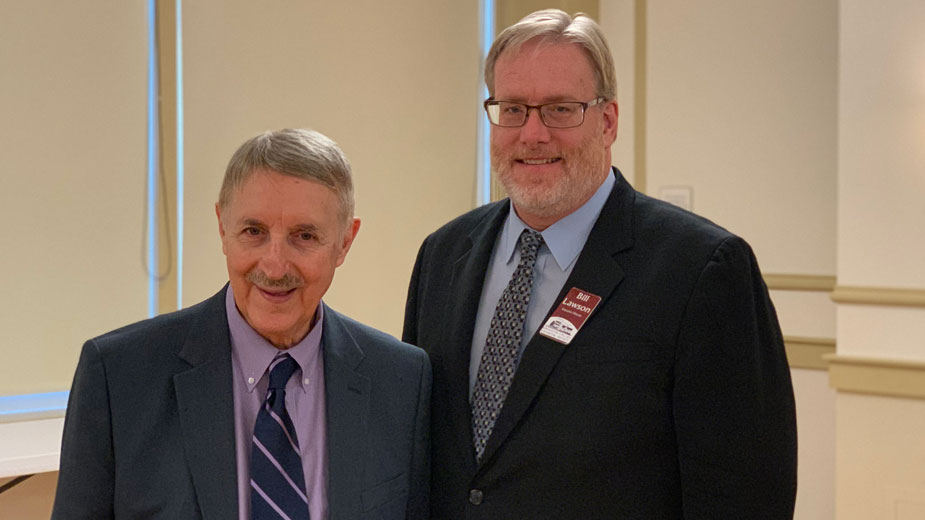Zona Chronicles Butler’s Century of Evolution
YOUNGSTOWN, Ohio – At the turn of the 20th century, Youngstown was well on its way to becoming an industrial center. But 100 years ago, a member of the city’s industrialist class envisioned it as something more: a cultural center.
“It certainly was an industrial center that he envisioned being a wonderful home for great, American art,” said Lou Zona, executive director of the Butler Institute of American Art, at the Mahoning Valley Historical Society’s Bites and Bits of History lunch program Sept. 19.
In 1917, Butler lost his art collection in a fire at his home on Wick Avenue, which included mostly European art, Zona said. At the time of the fire, Butler was in New York City, but fortunately, neighbors who knew of the value of his collection in the house who were able to save some of the work.
“[Butler] invited the best architects of the day to come to Youngstown and to build design and build the [museum],” Zona said. “It was the very first building created to have an American art collection.”
An architectural firm, McKim, Mead and White, was sought out by Butler to create the museum. The team had built the famed Pennsylvania Station in New York just a few years earlier and there are similarities in architectural details between the two buildings, Zona noted.
In 1919, Butler was able to stand on the steps of the museum he had created, and say, “We lead the world in entrepreneurship… We lead the world in many categories.”
“And one day,” he said, “we will lead the world in art.”
“I would bet he would not be disappointed if he would magically come back and visit us,” Zona said. “I think hopefully he would be real happy with what’s happened with the Butler over the years.”
The Butler started out with only 30 paintings that were handpicked by Butler, Zona said. Today, there are 22,000 works of art in the museum’s collection of every medium of every period in American art history.
“[Butler] was truly a visionary,” Zona said as he presented a photo slideshow of the museum’s collection and construction over the years to the audience at the Tyler Mahoning Valley History Center.
It has also been a journey taking care of the marble on the Butler over the years, Zona said. Employees have to work hard to keep re-caulking as needed.
For inspiration in their designs for The Butler, McKim, Mead and White went back to Rome and Greece.
“The Butler is based upon an Italian Renaissance design,” Zona said. “When you walk up onto the portico of the Butler, you look up at the mosaics and sculptures in the niches.”
When more space was needed to house the growing collection at the museum, Butler decided to put wings onto the original design of the museum, Zona said. The building has also been entirely rewired, he added.
“I remember one day when one of the electricians was up on a ladder and I said why is there snow falling on your shoulders, and he said it’s insulation,” Zona said. “That’s all we needed to hear.”
Eventually, air conditioning came into the picture as well as LED lighting, which is better to preserve works of art and less expensive, Zona said. In 1986, museum employees undertook a major campaign to raise money to expand the museum to make it more of a public place. Restrooms, story areas and a children’s gallery was added.
“It’s changed physically going from a nice, important, neoclassical building by McKim, Mead and White to the expansion of purchasing the church next door,” said Bill Lawson, executive director at the Mahoning Valley Historical Society.
The collection at The Butler is the most important by having people following in the footsteps of Butler, Lawson said. The museum still represents artists of many generations throughout American history.
Pictured: Lou Zona, executive director of The Butler Institute of American Art, was the featured speaker at the Mahoning Valley Historical Society’s Bites & Bits of History lunch. Bill Lawson is the society’s executive director.
Copyright 2024 The Business Journal, Youngstown, Ohio.



